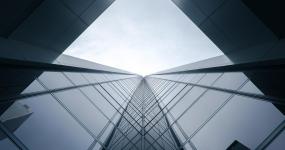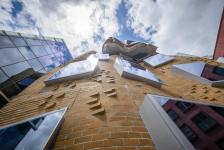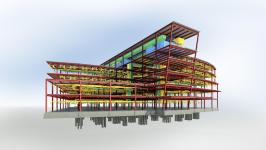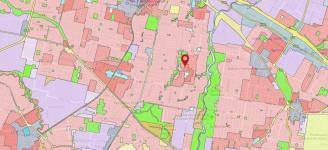15 Tips for Designing Energy Efficient Buildings
The rise of climate change has put energy efficiency at the top of the agenda. Your clients want green buildings that save them money. Here are some tips for designing energy-efficient buildings.
The world is more environmentally-conscious than ever before. As people learn more about climate change, the demand for sustainable solutions increases. This affects every industry, and building design is one of the most prominent.
Creating energy-efficient solutions is now key to selling architectural services. Clients want energy efficiency for two reasons:
- Going green improves public perception of a brand. Many people now prefer businesses that prioritise sustainability. As such, businesses want to use energy efficiency to strengthen their brands.
- Energy efficient buildings cost less money to maintain. Business owners spend less on power and waste disposal over the long term. They can then reinvest these savings and strengthen their businesses.
The desire to go green has led to changes in architecture and engineering. Building Information Modelling (BIM) has gained popularity as the environmental cause has strengthened. In fact, many clients today look at BIM as the key to selling architectural services.
So, how do you demonstrate that you prioritise energy efficiency? Follow these 15 tips.
Tip #1 – Account for the Location
Property developers always tell you that location matters. However, it’s not just an area’s attractiveness that affects your buildings.
This extends to your design choices. If you build a west-facing building, you expose it to the afternoon sun. This isn’t always desirable in Australia’s hot climates. Sun exposure creates internal heat, which means the people inside use air conditioning. This wastes energy and costs your clients' money.
Where you build has importance too. Check with the local council to avoid building on sensitive areas, such as natural habitats for animals. Also, check for nearby public transportation. If people can get to buses and trains easily, they don’t need their cars. This makes your building indirectly energy efficient, as its location influences people’s actions.
Tip #2 – Be Cautious of Undeveloped Land
This is a particularly important tip if you’re selling architectural services to property developers. Undeveloped land requires excavation when you build on it. Pipes need installing, as do power cables and irrigation systems. This generates a huge environmental impact, as it requires the use of petrol-driven machinery.
Instead, consider building on previously-developed land. Such land tends to have water, sewer, and power lines installed. As a result, you often need to just connect them up to the building. Even if you do need to dig, you can build from the existing utilities and reduce your environmental impact that way.
Tip #3 – Design for Passive Solar

Your aim is to build energy-efficient buildings that make use of the natural climate for cooling and heating. The first tip involves designing for passive solar. Your building’s orientation affects the heat generated inside. However, passive solar extends further than that.
Consider design choices that allow the property to capture passive breezes. This aids in cross-ventilation, reducing the occupant’s reliance on air conditioning. Look for shading, where appropriate, and consider the materials that you use. Lightweight materials work best in hot environments, but thermal mass is more important when it’s colder. Even your fixtures, such as a skylight, allows you to use passive solar to your advantage.
Tip #4 – Consider Insulation
Insulation proves its worth when you’re designing energy efficient buildings for colder climates.
Most of the heat in a property escapes through the walls and the roof. In total, 35% of your heat goes through the walls, whereas 25% leaves via the roof.
The end result is that occupants have to keep the central heating system on to keep their homes warm. This requires energy to heat water, which drives up energy bills.
Insulating the attic and any cavity walls reduce those bills. However, there is a caveat to this. Those living in hot environments don’t benefit as much from insulation. They want to allow hot air to escape, rather than keep it inside.
Consider the location and its weather before installing insulation.
Tip #5 – Pay Attention to Appliances
You won’t always have a say in appliance use when selling architectural services. However, you can advise your clients if they ask you to.
Every appliance an occupant plugs in costs energy. How much depends on the efficiency of the appliance. As a general rule, older appliances require more energy than modern ones. They don't follow the same efficiency standards of modern appliances.
Check labels to look for the Energy Rating. The label uses a 10-star to tell you how efficient an appliance is. The more stars on the label, the more efficient the appliance. Aim for as many 6-star or higher appliances as possible to improve efficiency.
Tip #6 – Use Natural Water
Imagine that you’re designing a high-rise building. The larger the building, the higher the energy demands. However, selling architectural services needs you to make the building as efficient as possible.
Roof-mounted water tanks may offer the answer. These enormous tanks collect water from the most natural resource available – rain. They can then channel this water into the building’s plumbing system.
You won’t want to use this for the building’s drinking water. However, such tanks can save thousands of gallons of water used in flushing toilets and irrigation each year. Plus, you’re drawing from a sustainable source. As a result, your client spends less on their water bills.
Tip #7 – Install Solar Panels
Solar is the most viable alternative energy source when designing energy-efficient buildings. However, the initial costs put many building designers off. Even something as small as a 3kW solar panel system can cost $6,500.
However, consider what you get in return for that system. Modern photovoltaic solar panels last for over 20 years. That’s two decades during which your building’s owners benefit from lower energy bills. Over time, that initial investment gets swallowed up. After that, your clients save money.
Furthermore, Australia’s sunny climates put its buildings in prime position to maximise solar panels. You may even be able to apply for rebates through the Australian government, thus lowering the cost.
Tip #8 – Consider the Size

Every square inch that you add to your building design increases its energy usage. Sometimes, size isn’t avoidable. If you’re building a multi-storey apartment block, you can’t exactly go small.
However, you can consider how your design choices affect a building’s size. Practicality over flair is the order of the day when designing energy efficient buildings.
You may have ideas that cause the building to be larger than it needs to be. Reconsider them if you’re aiming for energy efficiency. Smaller buildings require less energy to heat, and cool down quicker. They also need fewer materials to build, leading to indirect energy savings.
Tip #9 – Choose Materials Wisely
You have three things to consider when choosing materials:
- The source
- Maintenance costs
- The local climate
When it comes to the source, take wood as a prime example. Choosing to build using wood from sustainable sources leads to more energy efficient buildings. The trees used are replanted, which means more oxygen in the atmosphere. Look for the Responsible Wood certification if you’re unsure.
As for maintenance, think about what’s needed to keep the materials in good condition. For example, glass needs regular cleaning. For a high-rise building, this means hiring specialist crews who use machinery. That creates an energy cost, so consider the size of windows.
As for the climate, it comes down to choosing the right materials for the environment. Concrete and other materials with a high thermal mass aren’t suitable for hot areas. They trap too much heat. However, they’re ideal for cold areas.
Those are just a few examples. Consider all three factors before choosing your materials.
Tip #10 – Install Automatic Lights
Lights require energy, and many people forget to turn them off. In large buildings, turning off all the lights takes time, and it’s easy to miss a few. Each missed light adds to the energy bill and damages the building’s efficiency.
Instead of installing switches, take the burden away from your clients. Install automatic lights that detect when people are in a room. They turn on for as long as they’re needed, then switch themselves off when the room empties.
Most of these light fixtures have motion detectors, so they cost more than standard fixtures. Still, like other energy efficient technologies, they repay that cost over time.
Tip #11 – Check the Windows

The windows you install have a huge effect on energy efficiency, especially in cooler areas. Much like walls, heat can escape through windows. The thinner the glass, the more heat escapes.
Double-glazed windows don’t eradicate heat loss, but they do lower it. Furthermore, they have the added advantage of absorbing noise.
Curtains and drapes also help when designing energy-efficient buildings. Both provide another barrier to exit for the building’s heat.
Of course, this is another tip that doesn’t work as well in warm climates. Ventilation is more important in such areas, but your window choices still matter. For example, you could install louvre windows to improve airflow.
Tip #12 – Use Low-Flow Water Fixtures
Water wastage is a big concern for clients who want energy-efficient buildings. Inefficient water fixtures lead to waste, even during standard usage. Take a power shower as an example. While it may feel great when you’re using it, that shower uses more water than you need. A low-flow shower achieves the same results, while using less water.
Apply this line of thinking to the building’s other water fixtures. Taps and toilets both use a lot of water unnecessarily. Install low-flow systems in them too and you’ll help clients save lots of money on their water bills. Of course, any cash savings your buildings make will help you in selling architectural services.
Tip #13 – Install Strong Seals
Every little helps when it comes to designing energy-efficient buildings. The quality of the seals on doors and windows matter. In fact, buildings lose between 15% and 25% of their heat through inadequate seals.
Think of seals as insulation for doors and windows. The better they are, the more heat the building retains. This results in less spending on heating systems, which benefits your clients.
Tip #14 – Use Mirrors and Other Reflective Materials

A lack of natural light leads to people needing artificial lighting. This presents a problem when building larger structures. Energy efficient buildings use natural light as much as possible. This reduces the energy cost of using artificial lights.
Mirrors and reflective surfaces offer the answer. Strategically placed mirrors can reflect natural light into the darker corners of your building. This prevents the need for artificial lighting during the day.
Tip #15 – Adopt the Building Information Modelling Method

BIM got a mention at the top of the article, but you may not understand how it improves energy efficiency.
BIM allows you to use multiple sources of data to create optimised building designs. In real terms, this means you can determine exactly how much of each material you need in construction. This prevents you from producing too much, thus lowering the amount of energy needed to build.
It also incorporates energy modeling. Many modern digital design software packages allow you to figure out a building’s energy usage from the conceptual stage. Using this information, you can optimise towards energy efficiency while designing.
Adopting Building Information Modelling comes at a cost. You’ll need to train your teams and may need new design software. However, it’s one of the best methods for designing energy-efficient buildings.
Conclusion
It’s unlikely that you’ll be able to use all of the above when designing your buildings. Some of these tips require situational awareness. For example, installing insulation may be a bad idea in warm climates. However, avoiding it when building in cold areas leads to larger energy bills.
What this article does is provide some ideas on how to improve energy efficiency in your buildings. Consider each tip and whether it applies to your work.
Remember that energy efficiency starts at the design stage. If you don’t optimise the design, you create an inefficient building.
That’s where ArchiStar can help. Our courses will teach you everything that you need to know about modern digital design software. Furthermore, we offer training in Revit and other software packages that BIM-adopters use.
Contact ArchiStar Academy today to find out how you can use digital design software to create energy-efficient buildings.
ArchiStar Academy offers several courses across the spectrum of digital design software. You’ll develop your skills, allowing you to create more accurate and functional models.
Please don’t hesitate to get in touch with Archistar Academy today if you have any questions.
If you would like to share your thoughts on our blog, we’d love to hear from you!
Get in touch with the ArchiStar Academy community via Facebook.
Posted on 20 Jan 2020

